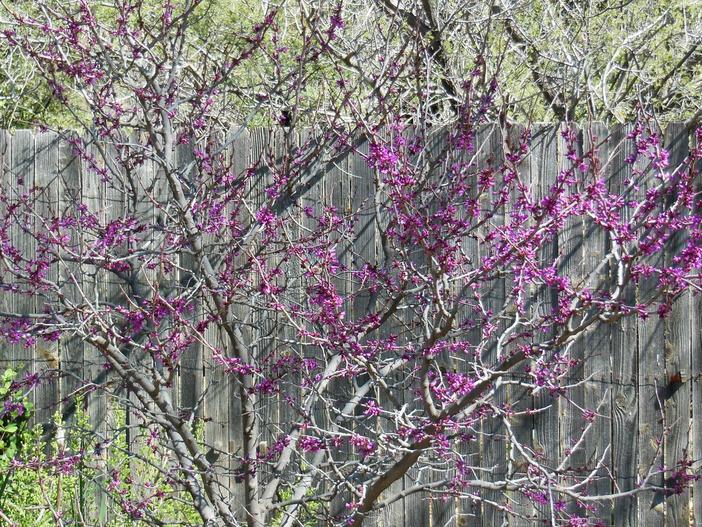Mexican Redbud
(Cercis mexicana)
Mexican Redbud (Cercis mexicana)
/
/

William Herron
CC BY-SA 2.0
Image By:
William Herron
Recorded By:
Copyright:
CC BY-SA 2.0
Copyright Notice:
Photo by: William Herron | License Type: CC BY-SA 2.0 | License URL: https://creativecommons.org/licenses/by-sa/2.0/ | Uploader: William Herron | Publisher: Flickr










Estimated Native Range
Summary
Cercis mexicana, commonly known as Mexican Redbud, is a deciduous small tree or large shrub native to limestone hills, rocky slopes, and canyons in Texas and Northeastern Mexico. It typically grows to a height of 10-20 feet (3-6.1 meters) and a width of 10-15 feet (3-4.6 meters). The Mexican Redbud has a multi-trunked, vase-shaped form with a rounded canopy. Its leaves are heart-shaped with a glossy green appearance that turns yellow in the fall. The spring season brings a profusion of small, showy, rosy-pink to magenta flowers that appear before the leaves, creating a striking display.
Mexican Redbud is valued for its drought tolerance, making it suitable for xeriscaping and low-water-use gardens. It is often used as an ornamental tree in urban landscapes, residential gardens, and as a patio tree due to its manageable size and attractive flowers. This species prefers well-drained soils, tolerates a range of soil types including alkaline, and requires minimal maintenance once established. While it thrives in full sun, it can also tolerate part shade, which makes it versatile for various garden settings. There are no major disease problems, but it can be susceptible to leaf spot and canker in poor conditions.CC BY-SA 4.0
Mexican Redbud is valued for its drought tolerance, making it suitable for xeriscaping and low-water-use gardens. It is often used as an ornamental tree in urban landscapes, residential gardens, and as a patio tree due to its manageable size and attractive flowers. This species prefers well-drained soils, tolerates a range of soil types including alkaline, and requires minimal maintenance once established. While it thrives in full sun, it can also tolerate part shade, which makes it versatile for various garden settings. There are no major disease problems, but it can be susceptible to leaf spot and canker in poor conditions.CC BY-SA 4.0
Plant Description
- Plant Type: Tree, Shrub
- Height: 10-20 feet
- Width: 10-15 feet
- Growth Rate: Moderate
- Flower Color: Pink, Purple
- Flowering Season: Spring
- Leaf Retention: Deciduous
Growth Requirements
- Sun: Full Sun, Part Shade
- Water: Low
- Drainage: Fast, Medium
Common Uses
Bee Garden, Bird Garden, Border Plant, Butterfly Garden, Deer Resistant, Drought Tolerant, Fire Resistant, Hummingbird Garden, Showy Flowers, Street Planting
Natural Habitat
Limestone hills, rocky slopes, and canyons in Texas and Northeastern Mexico
Other Names
Common Names:
Scientific Names: Cercis canadensis var. mexicana , Cercis canadensis subsp. mexicana , Cercis mexicana
GBIF Accepted Name: Cercis canadensis subsp. mexicana (Rose) A.E.Murray